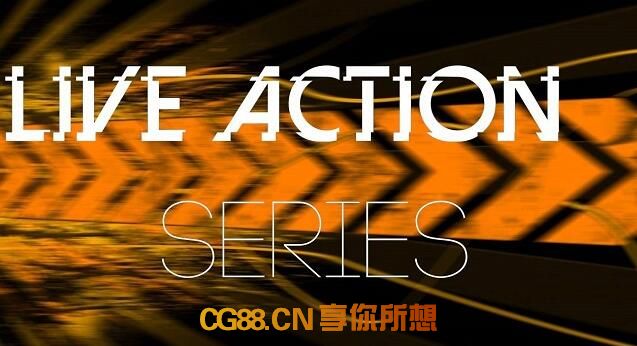Allan McKay – Live Action Series – Term 1
标题:艾伦麦凯 - 现场动作系列 - 第1学期
信息:
外汇期限1 - 世纪城市建筑物破坏
在我们深入研究镜头序列之前 - 我们的重点是在许多镜头上进行许多FX,并通过出现的独特挑战进行学习。我们的第一个任期的目标是在单人投篮或“一次性”投球中跳入深渊。这将使我们有机会将我们所有的注意力和精力集中在这个过程上并走过一个真正的电影工作室管道。
最初走进预生产阶段,我们能够学到许多关于如何以“正确的方式”拍摄视觉效果的重要课程。在采取行动之前,计划和讨论所涉及的内容并传达我们的计划。从我们拍摄的最初“移交”开始,然后开始分阶段阻挡我们的镜头,然后我们开始过多地参与创建所有元素。
当我们开始创建效果时,我们首先创建我们的破坏并锁定外观。学习创建一个可靠的工作流程来创建我们的破坏动态,并将其与基本光照和阴影整合到我们的镜头中。我们的第一次审查是在我们最初建立破坏的第一个通道之后 - 然后我们审查这个并决定需要修改的区域 - 一个非常关键的时刻是我们审查我们的镜头并开始解决问题并修改任何问题的地方在我们最终确定动画之前进行模拟,并导出所有内容的Alembic缓存以供最终渲染使用。
一旦我们的动态模拟得到批准和“发布”,我们就会创建所有的效果,这些效果是由我们构建的基础模拟驱动的。最初专注于几何模拟,我们创造了许多额外的效果元素,从火花和余烬,到额外的二次玻璃冲击,碎片以及随着区域坍塌而溢出建筑物的密集云团。这些元素中的每一个都会发布并烘焙到Alembic缓存中,因此它们是最终的,也不需要进一步计算。
之后,我们创造了许多大气效果,包括各种级别的灰尘,火焰,爆炸,射击,烟雾,烟柱,火焰爆炸和建筑物内部的大型火灾,以及其他几十层。
同时,我们在Nuke内部有许多元素的中间实现,这使我们可以看到我们的镜头进度,并了解它们将如何集成在一起。最后,一旦构建了所有元素,我们就会开始平衡渲染,重点关注光照和阴影以及调整图层,直到我们对所有效果元素进行完美平衡。然后我们可以开始构建渲染过程创建的场景状态,并将最终渲染过程转换为comp。
我们不仅专注于对元素进行重度处理,还有许多技巧可以将我们的元素无缝集成到镜头中,并添加额外的反射和许多其他步骤。但我们能够整体审视我们的镜头以及我们希望创建的其他元素。在这里我们可以最后一次进入3D进行任何最终调整,以及创建撞击建筑物两侧的任何碎片的“接触图”,以及刻录我们的火焰元素燃烧的地图并标记周围的建筑区域,交互式照明通过我们的火照亮和点亮我们的镜头。
所有这些都是在相当长的时间内完成的,我们第一次专注于做大部分重型工作,但我们的重点是让一个视觉效果镜头完全惊人并将其带到最后。了解方法的每一步,并了解在我们完成整个过程中修改效果所涉及的许多步骤。最后的外观是高质量的好莱坞制作水平的视觉效果拍摄。现在我们可以开始复制这个过程,但是在更多的镜头中,在更进一步的术语中更多的镜头。这是一个激烈的教训,为课程的其余部分铺平了道路。
Title: Allan McKay – Live Action Series – Term 1
Info:
FX Term 1 – Century City Building Destruction
Before we dive into sequences of shots – where our focus will be in working on many FX for many shots and learning through the unique challenges that arise. Our goal of the first term is to jump in the deep end on a solo shot or a ‘one off’. This will give us the chance to focus all of our attention and energy on the process and walking through a real film studio pipeline.
Initially walking through the pre-production phase we’re able to learn many critical lessons on how to approach a visual effects shot ‘the right way’. Planning and discussing what’s involved and communicating our plan before we take action. From initial ‘hand over’ of our shot and then beginning to block out our shot in phases before we get involved too heavily in creating all of the elements.
As we dive into creating the effects, we first initially create our destruction and lock the look. Learning to create a solid workflow for creating our destruction dynamics and integrating it into our shot with basic lighting and shading. Our first review is after we initially build our first pass of the destruction – we then review this and decide on what areas need revisions – A really critical moment is where we then review our shot and begin to problem solve issues and revise any issues with our simulation before we finalize the animation, and export Alembic caches of everything for use in final rendering.
Once our dynamic simulation is approved and ‘published’ we move onto creating all of our effects which are driven from the base simulation we built. Initially focusing on geometry simulations we create many additional effects elements from sparks and embers, to additional secondary glass impacts, debris as well as dense clouds of dirt spilling out of the building as areas collapse. Each of these elements is also published and baked out to Alembic caches so they are final, and also require no further calculations.
After which we create many of our atmospheric effects, from various levels of dust, fire, explosions, shooters, smoke, smoke columns, flame bursts and internal large scale fire inside of the building, and dozens of other layers.
Meanwhile we have many intermediate implementations of our elements into composite inside of Nuke, which allow for us to see our shot progress and understand how it will all be integrated together. Finally once all of our elements are built, we begin to balance our renders out, focusing on the lighting and shading and adjusting layers until we have a perfect balance of all of our effects elements. We’re then able to begin to build up our scene states for render pass creation and take our final render passes into comp.
Not only do we focus on heavy treatment in comp of our elements, as well as many tricks to integrate our elements seamlessly into the shot, and adding additional reflections and many other steps. But we’re able to review our shot as a whole and what additional elements we wish to create. Here is where we’re able to go into 3D one final time to make any final adjustments, as well as to create ‘contact maps’ of any debris hitting the sides of the buildings, as well as burn maps for our pyro elements to burn and mark up the building areas around it, and interactive lighting passes to get our fire to illuminate and light our shot as well.
All of this is performed over a fairly lengthy time, our first time is one where we focus on doing a majority of heavy duty work, but our focus is on making one visual effects shot completely amazing and taking it through to final. Understanding every step of the way and learning many of the steps involved in revising our effects as we move through the process. The final look is that of a high quality Hollywood production level visual effects shot. Which now we can start to replicate this process but on a much larger scale in many more shots in the further terms. This is an intense lesson and paves the way for the rest of the course.
你可能也喜欢
- ♥ 刚体工具更新 | H17大师班RBD Tools Update | H17 Masterclass06/08
- ♥ Swarm浮游粒子系统Houdini Tutorial – Swarm System06/08
- ♥ 快速提示:Houdini Flip可变粘度Quick tips Houdini Flip variable viscosity06/08
- ♥ RBD刚体与Pyro流体交互Houdini Tutorial RBD Pyro mesh growth effect06/08
- ♥ Vellum细胞复制教程 – 第3部分Vellum Cell Replication Tutorial – Part 306/09
- ♥ Houdini流体变形工具Houdini Master Volume Deform Tool (HIP)06/08

